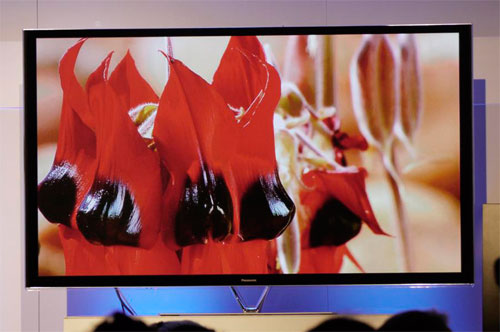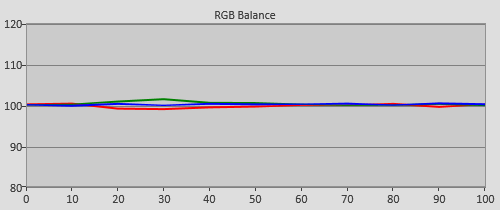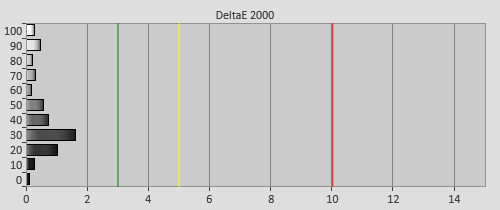Ok, this is REALLY the last Panasonic plasma we’ll ever review.
Shortly after we published our Viera TX-P42GT60B review five weeks ago, declaring it as “the last Panasonic plasma we’ll ever review”, our friends at Panasonic Store Doncaster contacted us, offering to send us the TX-P60ZT65B – the best plasma TV the Japanese manufacturer has ever produced – to test as a fitting final farewell. Given our genuine admiration of what Panasonic plasmas have brought to the video enthusiast community over the years, how could we refuse?

Of course, we had previously reviewed the ZT back in May 2013, so is there any point in re-reviewing it again? Well, since then, we’ve tested a couple of OLED TVs from Samsung and LG Electronics which are capable of true 0 cd/m2 blacks, so it’ll be interesting to see how plasma’s finest son stacks up to them. Also, some interesting calibration techniques and user complaints have surfaced over time, so we’ll try to address them in this article.
One of the questions most often asked by prospective buyers who do their research is whether the Panasonic ZT65 can hold its own in a reasonably bright room with sunlight. This concern probably stems from the widely-followed 2013 HDTV Shootout event hosted by New York high-end AV retailer Value Electronics, where it was suggested that the maximum light output of the ZT60 was capped at 30fL (around 103 cd/m2) when fully calibrated in [isf Day] mode.
It’s worth remembering that the Viera ZT60 used at the US shootout was the 65-inch version, whereas the UK and Europe only get the 60-inch model which is capable of higher luminance due to smaller screen size. Also, recently a few American calibrators have started using [Panel Luminance] “High” instead of “Mid” to extract even more light output from Panasonic VT/ZT to good effect, and without any major downsides. With this setting, our TX-P60ZT65 sample produced a maximum brightness of 130 cd/m2 from the AVSHD 100% white windowed pattern, which is not to be sneezed at for a plasma of this size.
[Panel Luminance] “High” calibrated very well too, debunking the misconception that it’s incompatible with accurate video reproduction. Here are our calibrated results done using our trusty Klein K10-A meter and CalMAN 5 software in [isf Day] mode:
  |
| Post-calibration RGB tracking and dEs in [isf Day] mode |
![Post-calibrated gamma in [isf Day] mode](https://www.hdtvtest.co.uk/news/wp-content/uploads/2018/04/hdtv_Panasonic-TXP60ZT65B_post-lum.png) | ![Post-calibrated gamma tracking in [isf Day] mode](https://www.hdtvtest.co.uk/news/wp-content/uploads/2018/04/hdtv_Panasonic-TXP60ZT65B_post-gamma.png) |
| Post-calibration gamma (2.2) |
![Post-calibration Colour saturation tracking in [isf Day] mode](https://www.hdtvtest.co.uk/news/wp-content/uploads/2018/04/hdtv_Panasonic-TXP60ZT65B_post-strack.jpg) |
| Post-calibration colour saturation tracking |
![Post-calibration colour errors in [isf Day] mode](https://www.hdtvtest.co.uk/news/wp-content/uploads/2018/04/hdtv_Panasonic-TXP60ZT65B_post-strack-de.png) |
| Post-calibration colour errors (<3 not appreciable to the eye) |
As you can see from the charts above, we achieved essentially perfect greyscale and colours, so there’s really no reason to not use [Panel Luminance] “High” if higher light output is needed to provide a watchable picture in the presence of competing ambient lighting. For daytime viewing, we targeted a gamma of 2.2 to better preserve shadow detail: our usual target of 2.4 is suited for a dark viewing environment, not in a brighter room where sunlight makes near-black detail harder to discern.
Sure, switching [Panel Luminance] to “High” would increase plasma dithering noise (especially in shadowed areas) owing to coarser gradation, but it was not noticeable during the day from a sensible viewing distance. This highest [Panel Luminance] setting also clips whiter-than-white (WTW) shades entirely (i.e. above 235), though there’s a method to at least partially restore WTW detail up to 240 in line with other picture presets (as previously noted in our original review, the Panasonic TXP60ZT65B does not display the full range of WTW shades unless [Contrast] is dropped to uncomfortably low levels).
When you take into account the best-in-class anti-reflective filter implemented on the ZT65, the notion that the TV cannot cope in a sun-filled room is absolutely unfounded. Unlike most plasmas, the ZT’s blacks do not grey out much from light hitting the screen, allowing the television to hold onto its awesome black-level response even in unfavourably bright conditions. This is a top-notch display for all seasons, and only Samsung’s revolutionary F8500 whose luminance ceiling is higher can boast better bright-room performance among plasma display panels (PDPs).
A few months after the Viera ZT and VT went on sale, some users began complaining about extremely loud fan noise attributed to airflow through the back panel. Panasonic acknowledged this issue, and began authorising a fix for affected owners, which involves installing foam pads between the fans and the back panel.
Later builds post-July 2013 would have had had the fix applied at factory. Our TX-P60ZT65B – randomly picked from retail stock – was one such unit, and to us, its fan noise and plasma buzzing (which became louder as the screen got brighter) were not out of the ordinary for plasma TVs, and were certainly trivial in light of the set’s stunning picture quality. In any case, these noises can be easily masked by normal TV volume at sensible sitting distance.
For those who are seriously thinking about buying the Panasonic TX-P60ZT65, the alternative choice that most frequently comes under consideration is probably the 65in version of the company’s step-down VT65 range, if only because of how similar they are in price these days. Both are world-class TVs: the 65″ VT60/VT65 naturally offers more screen real estate; but the ZT60/ZT65 holds the upper hand in anti-reflection screen coating and general “cleanliness” of the image – it’s as if the ZT’s native [IFC] level is set somewhere between “Off” and “Min“, resulting in a squeaky clean output with marginally less dynamic false contouring (DFC).
Samsung’s best plasma is a worthy challenger to the Panasonic ZT and VT, but apart from very high light output for a PDP (which makes the F8500 the obvious choice in a very bright room), it’s edged out by the Viera TXP60ZT65B in almost every other aspect including slightly shallower black level, intermittent frame skipping and higher input lag. Don’t get us wrong: the Samsung PS64F8500 is a superb television in its own right for day-to-day use, but for critical viewing in a dimly-lit environment, the Panasonic ZT65/ZT60 is just a hair’s breadth better.
While these OLED televisions from Samsung and LG can pump out copious amount of light, are capable of true 0 cd/m2 blacks even in the presence of other lit elements on screen, and are free of PWM (pulse-width modulation) noise that’s unavoidable on plasmas, their curved design and exorbitant prices (at least £2000 more than the ZT, with a smaller screen size to boot) put them out of the running for most videophiles.
Despite OLED’s super-speedy response time, the sample-and-hold driving method implemented on the Samsung KE55S9C and LG 55EA980W means their native motion resolution is lower than that on the Panasonic TXP60ZT65. And for playing video games that demand fast reflexes such as first-person shooters (FPS), the Viera ZT60/ZT65 again trumps the OLEDs with lower input lag.
Ah yes, the ghost of Pioneer’s legendary Kuro plasmas that just wouldn’t die. Of course, these screens are no longer available to buy from new (and have been so for a good few years now), but existing owners may be wondering if they should swap for the Panasonic TX-P60ZT65B before stock runs out. For what it’s worth, the Pioneers can go brighter (energy regulations weren’t as strict in 2008-2009), and exhibit less DFC than the Panasonics. Astonishingly, select Kuro models can produce even deeper blacks than the ZT.
In Panasonic’s favour, its ZT60/ZT65 features superior anti-reflective filter, allowing the TV to hang onto its supreme blacks in the presence of surrounding ambient light, which makes it more suitable for use in a bright room during daytime. Panasonic plasmas also manifest less static dither and no high-frequency rolloff compared with the Kuros. At the end of the day however, the performance between these reference-level displays are so close – hairsplitting in fact – that we think the Panasonic TX-P60ZT65 is a viable replacement for Kuro plasmas whose 5-year guarantee would expire this year or next.
The TX-P60ZT65B is undoubtedly the finest plasma Panasonic has ever made, but is it the best flat-screen TV we’ve tested? We’d argue yes, when you take into account its unrivalled performance as a whole in handling movies, sports and video games, in both bright and dark conditions. At a street price of around £2600 (down from its original RRP of £4000), the Panasonic 60ZT65 represents the most affordable ticket to the highest-quality video reproduction in the home for the next few years (at least while stocks last), given that Samsung has gone off the boil on plasma (the company isn’t going to launch a successor to its F8500 PDP series), and large-sized OLED TV looks set to remain niche for the foreseeable future (LG is the only major TV brand ploughing ahead with OLED in 2014).
Who knows what the TV landscape will be in 10 years’ time… 50-inch OLED TVs, 8K television, VR (virtual reality) headsets abound? Maybe one day in that future someone will read back this article, and wonder what the fuss was all about. But you have to understand where we’re coming from: never has such a high level of home entertainment display been so accessible to so many people, and Panasonic played its part more than most. Their engineers have improved their plasmas year after year, culminating in their magnum opus, the “Beyond The Reference” ZT. When you buy the Panasonic TX-P60ZT65, you’re getting more than just a piece of hardware – you’re buying into a legacy honed through years of R&D and enthusiasts’ feedback, as well as the manufacturer’s deep understanding of what constitutes an accurate, unadulterated image.
We’re sad beyond words that Panasonic’s plasma journey is about to come to an end. When its Viera TX-P42GT60B took home the coveted “TV Product of The Year” gong at the What Hifi Awards last year, a Panasonic executive quipped that “it’s a good night for plasma”. Well, the party’s now over… good night, plasma – you’ll be sorely missed.